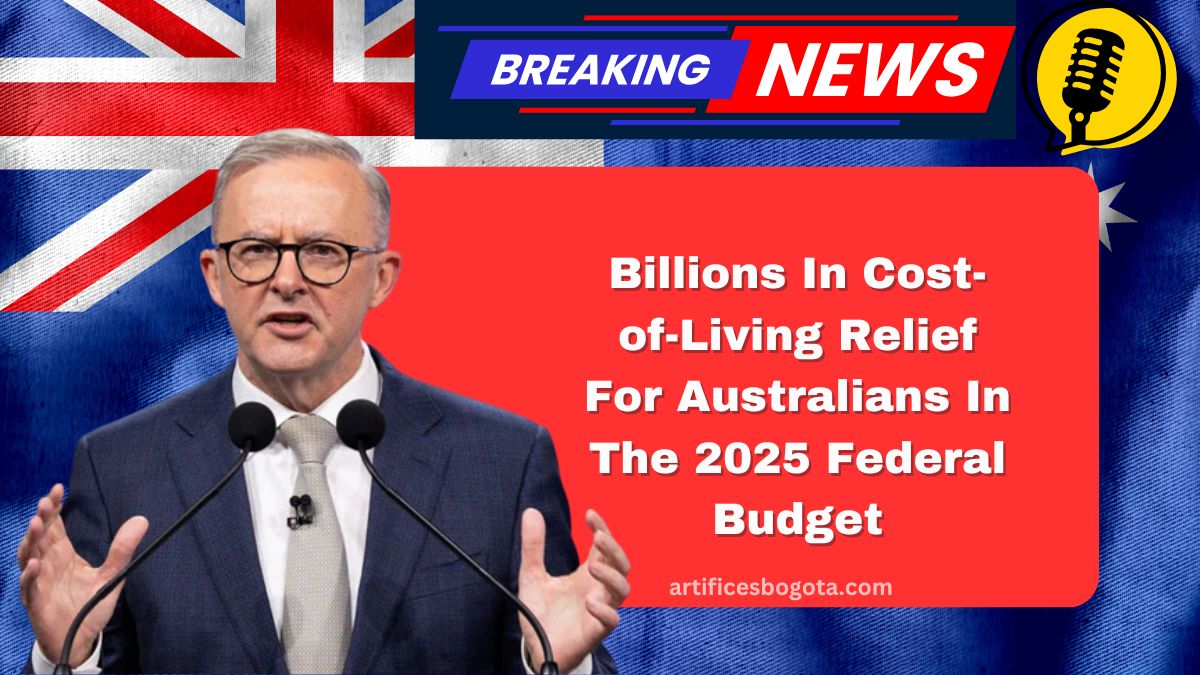The 2025 Federal Budget is set to offer Australians significant financial relief with billions allocated to help with the rising cost of living.
Among the key measures introduced, households will see continued energy rebates, students will benefit from HECS-HELP debt relief, and families will gain additional support for childcare costs.
This article covers the major provisions, expected impacts, and what citizens can expect from the new measures.
Key Provisions of the 2025 Federal Budget
The government’s focus on reducing the burden of rising living costs is evident in the proposed budget. Key measures include energy rebates, healthcare cost reductions, and subsidies for childcare.
These measures are aimed at providing immediate relief while tackling long-term economic stability.
| Measure | Amount | Effective Date | Target Group |
|---|---|---|---|
| Energy Rebate | $150 per year | July 1, 2025 | All Australian households |
| Healthcare – GP Visits | $8.5 billion for free GP visits | End of the decade | General public |
| Prescription Medicine | Reduction from $31.60 to $25 | 2025 | Medicare beneficiaries |
| Childcare Subsidy | $427 million over 5 years | January 2026 | Families with under $530,000 income |
| HECS-HELP Debt Relief | 20% reduction for 3 million Australians | June 1, 2025 | HECS-HELP debt holders |
| Apprenticeship Support | $10,000 per apprentice | July 1, 2025 | Tradies-in-training |
1. Energy Bill Relief for Households and Small Businesses
The government has extended its popular energy rebate program with a $1.8 billion allocation, providing a $150 rebate for every household and small business. This includes two quarterly installments of $75, to be distributed from July 1, 2025, onwards.
This continued relief is expected to ease the financial strain caused by rising energy costs. Without the rebate, energy bills could have increased significantly, but the subsidy helps maintain affordable rates for the public.
2. Cheaper Healthcare and GP Visits
Healthcare costs are a significant concern for many Australians, particularly when it comes to GP visits. The new budget includes a comprehensive plan to make nine out of ten GP visits free by the end of the decade.
This initiative is part of a broader $8.5 billion plan to expand bulk-billing incentives. The government will also provide a 12.5% bonus for GP clinics that fully bulk-bill all patients.
Additionally, prescription medicine costs will decrease under a new $690 million proposal. The price for most medicines listed on the Pharmaceutical Benefits Scheme (PBS) will be reduced from $31.60 to $25, helping patients save an average of $235 per year.
3. Subsidised Childcare for Families
As part of the ongoing effort to support working families, the government will spend $427 million over five years to subsidize three days of childcare per week for families earning less than $530,000 annually.
This policy is designed to reduce the financial burden on parents, making childcare more accessible and affordable. Furthermore, the government will remove the activity test, making it easier for low-income parents to access these subsidies.
4. HECS-HELP Debt Relief
In an effort to alleviate the financial pressures on students, the 2025 budget includes a 20% reduction in HECS-HELP debt for approximately 3 million Australians.
This $16 billion plan will offer significant savings for graduates, helping them reduce their student loan debt. The move follows a retroactive adjustment that will also lower the average debt by around $1,200.
5. Apprenticeship Support for Tradespeople
To support the growing demand for skilled workers, the government will allocate nearly $630 million to its Key Apprentice Program.
This initiative will provide $10,000 to apprentices during their training, paid in installments over their apprenticeship duration. The goal is to help apprentices complete their training and secure long-term employment in the trades.
6. Additional Support for First-Home Buyers
The government will expand its Help to Buy scheme to make homeownership more accessible. By increasing the income limits for eligibility, the scheme will now assist singles earning up to $100,000 annually and couples earning up to $160,000.
Additionally, property price caps will be raised, allowing more individuals to purchase homes, especially in high-demand cities like Sydney.
7. Other Measures
- Deeming Rates for Pensioners: The budget includes a measure to freeze deeming rates for 900,000 pensioners, ensuring their benefits are not impacted by changes in financial markets.
- Beer Savings: The government has paused the indexation of alcohol excise for draught beer until 2027, providing relief for beer drinkers, brewers, and hospitality businesses.
The 2025 Federal Budget brings much-needed cost-of-living relief to Australian households, from energy bill rebates to subsidized childcare and healthcare.
These measures aim to alleviate financial pressures and provide a safety net for millions of Australians. The government’s focus on supporting both families and individuals in need reflects a commitment to enhancing the country’s economic stability and ensuring a fairer, more sustainable future for all.
FAQs
When will the energy rebate be distributed?
The $150 energy rebate will be distributed in two $75 installments starting from July 1, 2025.
Who qualifies for the childcare subsidy?
Families earning less than $530,000 annually will qualify for three days of subsidized childcare each week.
What is the HECS-HELP debt reduction?
The budget includes a 20% reduction in HECS-HELP debt for approximately 3 million Australians, starting June 1, 2025.
